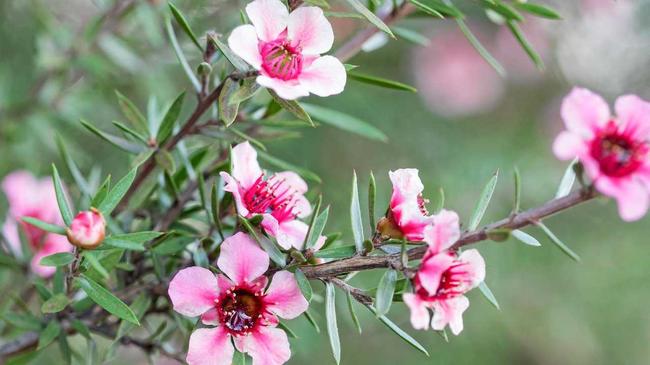GARDENING: Common tea-tree a star of the late-winter garden
ONE of the delights of the late winter garden is the burst of colour that many of the flowering native plants bring to the garden

Grafton
Don't miss out on the headlines from Grafton. Followed categories will be added to My News.
ONE of the delights of the late winter garden is the burst of colour that many of the flowering native plants bring to the garden, and the leptospermums are among the star performers.
The shrubs are so smothered in masses of small white, pink or red flowers that it is almost impossible to see the delicate, fine foliage. They remind me of cherry blossom trees on a miniature scale.
Leptospermums are native to Australia, South-East Asia and New Zealand. There are more than 80 species in Australia, and many cultivars.
The common name "tea-tree'' was given by the early settlers, who soaked the leaves of several species in boiling water to make a tea substitute. (But tea tree oil, widely used for its antiseptic and healing properties, is distilled from plantations of melaleuca alternifolia.)
The Aussie Blossom series of leptospermum are hybrid forms, bred for superior growth habit and profuse flowering. They are small shrubs with fine foliage and masses of cherry blossom-style flowers in late winter-spring.
Leptospermum nana rubrum is one of the ancestors of this series, and is worth growing for its beautiful rich burgundy foliage and masses of bright red flowers. "Martin'' has pale pink flowers and grows to about 1.5 metres.
The flowers are beautiful in a vase, and will last up to four days once cut.
Leptospermums are easy plants to grow in sunny, well-drained garden beds. Sandy soil is fine, but heavy clay soils that don't drain freely are not really suitable. However, I find that the lemon-scented tea-tree (leptospermum petersonii) is quite happy in my red soil.
Leptospermum liversidgeii is another form that sometimes goes by the name of lemon-scented tea-tree, but this one has high concentrations of citronella oil in the foliage. It is said to be a useful mosquito deterrent, although the leaves need to be crushed to release the oils. Unfortunately, it is not always easy to come by.
As with many flowering shrubs, it's a good idea to prune after flowering to maintain a tidy, healthy bush. Just remove about one-third of the growth, and keep an eye on the overall shape.
Mulching is beneficial, but they don't need vast amounts of fertiliser and are fairly trouble-free.
Leptospermums are extraordinarily versatile, teaming well with other flowering natives such as grevilleas, kangaroo paw, hardenbergia, scaevola and grasses. They also look perfectly at home in a cottage-style garden planted with roses and other flowering plants.
Got a gardening question? Email maree@edenatbyron.com.au
Originally published as GARDENING: Common tea-tree a star of the late-winter garden


